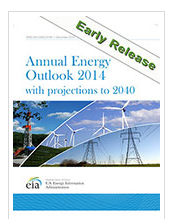Insights
Clean Energy Blog by Tigercomm
Expert Insights & Tips
EIA Renewable Energy Forecast Isn't Just Wrong, It's Wildly, Laughably Too Low
Topics:
State of the Industry
I hate to criticize the federal agency I worked at for 17+ years, especially since the Energy Information Administration (EIA) does great work in many areas...
Continue ReadingHere are five recommended reads for today (12/2/13).
Continue Reading